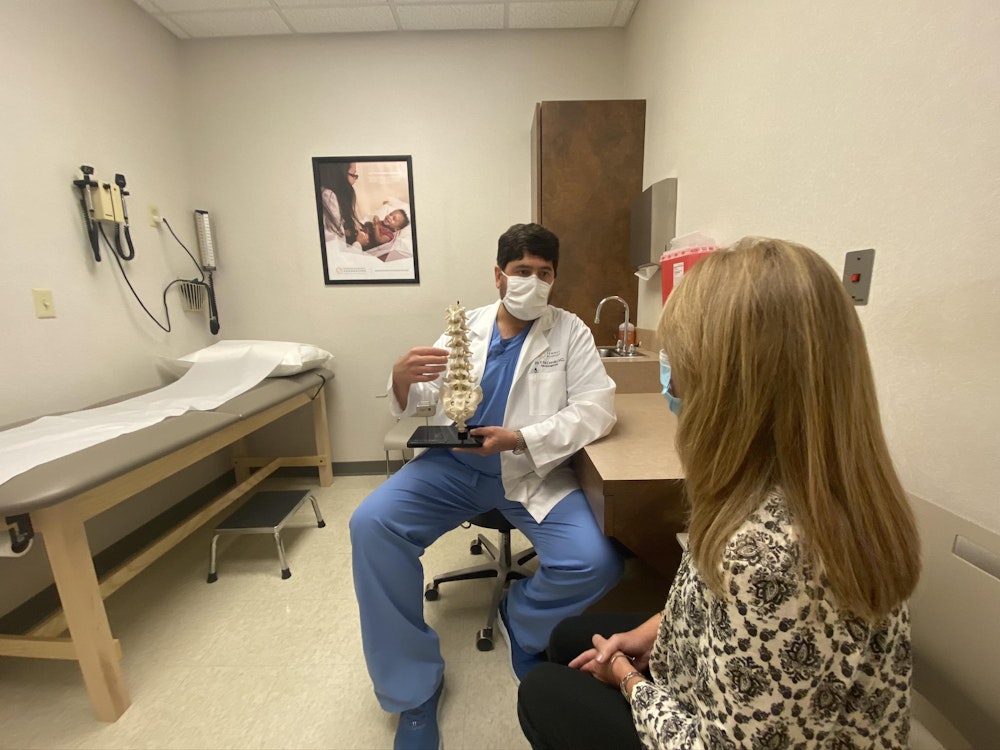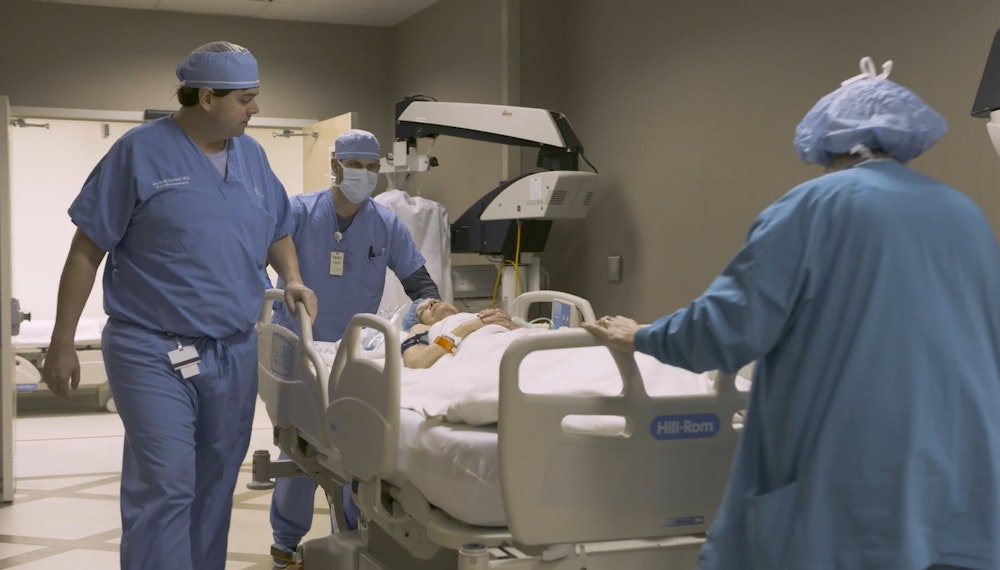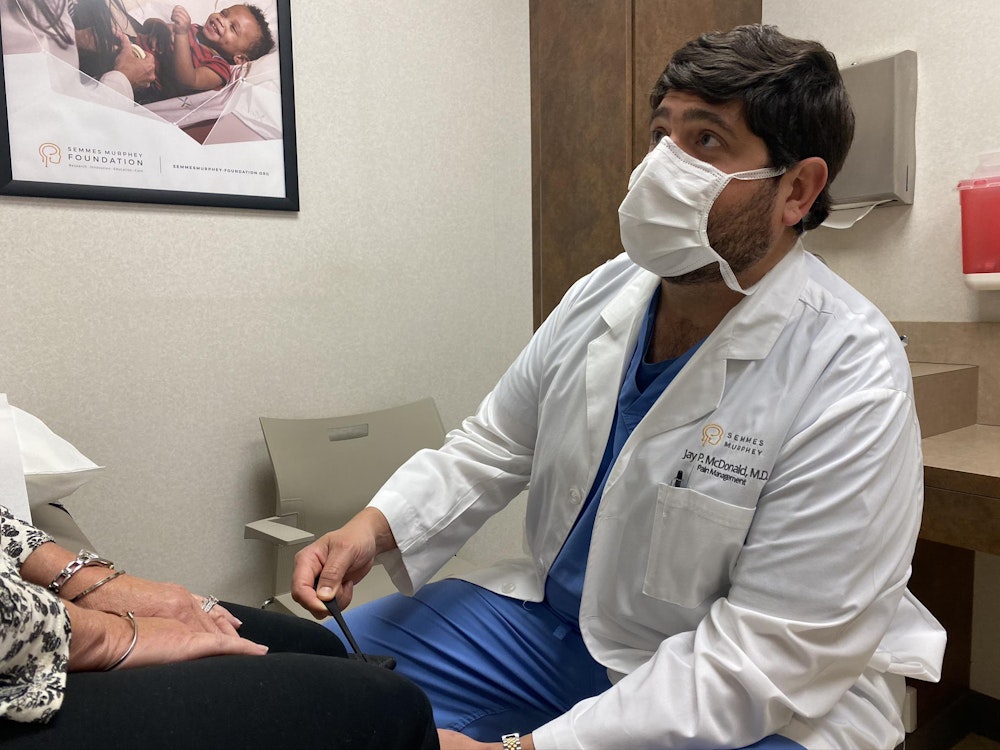Articles
Oct 1, 2020
Q&A with Dr. Jay McDonald: Spinal Cord Stimulators, A Game Changer for Back Pain
For some patients, spinal cord stimulators are a game-changer, bringing significant relief. We checked in with Interventional Pain Management Specialist Dr. Jay McDonald to learn more.
Chronic back pain results from a wide variety of causes but is almost always debilitating. It inhibits movement and can severely impact daily activities like work, driving, and housework. For some patients, spinal cord stimulators are a game-changer, bringing significant relief. We checked in with Interventional Pain Management Specialist Dr. Jay McDonald to learn more.

What is a spinal cord stimulator?
Dr. McDonald: A spinal cord stimulator is an electrical device that is implanted under the skin to help control spine-related pain. Two thin, flexible wires are placed in the epidural space above the spinal cord. These are then connected to a stimulator that sends an electrical signal to the nerves. The electrical signal will, in a sense, override the signals from the nerves, meaning the patient doesn’t feel their pain as much or at all.
Who is a good candidate for a spinal stimulator?
Dr. McDonald: This device is typically used when patients have not had success with physical therapy, medications, nerve blocks, and even surgery to address their pain. Sometimes patients are not able to have a major back surgery because of other medical problems. In these cases, a spinal cord stimulator can be a good option.

Q: What is the procedure like?
Dr. McDonald: Once a patient is medically cleared for the procedure, we start with a trial phase. Using local anesthetic to numb the skin, the wires are carefully placed in the back, and the device is turned on. With feedback from the patient, we adjust the placement of the wires to address the specific area of pain. The wires are connected to a small, external stimulator that is usually worn on a belt. After living with the external model for a week, the patient and doctor evaluate its effectiveness. At the end of the trial, the wires are painlessly removed.
If the patient has a successful trial, they undergo a minor, outpatient surgical procedure to implant the permanent device. Two small incisions are made in the back so that both the wires and the stimulator can be implanted under the skin. Once it’s in place, the patient can use a remote control to adjust the amount of stimulation based on pain level and activity. Typically though, once they find out their best settings, they do not need the remote on a day-to-day basis.

What does the stimulator feel like?
Dr. McDonald: There are two main ways that people experience stimulation. Traditional stimulation feels like a light buzzing sensation in the areas where pain previously existed. A newer option is a silent or “high-frequency” program where the patient doesn't feel any buzzing at all. Sensory and motor nerves are unaffected. This means that you still have normal sensation in your body and can move around normally as well. I always tell patients that if you stub your toe or something like that, you will still feel that pain normally. This device just gets rid of that chronic, back-ground pain.
Is activity limited?
Dr. McDonald: Once the wire leads have had time to scar firmly in place (approximately six weeks), there are very few limitations. The system is inside the body, so patients can exercise, run, swim, play sports, bike, work in the yard, or do any of the things they enjoy. The idea behind the spinal cord stimulator is to reduce or eliminate chronic pain so patients can resume and enjoy normal activities.
How long does the battery last?
Dr. McDonald: The implanted stimulation unit is powered by a battery. Charging frequency varies depending on use and personal preference. Some patients charge it for 15-20 minutes every day, and others prefer to charge it for about an hour or so once a week. The patient places a charger over their stimulator site (usually near the waist) and charges the device through the skin. The battery has a typical lifespan of about 7-10 years.
Is there anything else you would like patients to know?
Dr. McDonald: This really can be a life-changing procedure for patients who have suffered from chronic pain. I hope I have answered all of your questions. You can hear about the procedure from a former patient. He has an incredible story. If patients would like to discuss it further and see if this would be a good fit for them, all they need to do is make an appointment to see me.

